 Garbed in loose-fitting, camouflage print jackets, t-shirts and jeans, their long hair bound in tight braids, two eleventh grade girls bent down, and each dipped a finger in the sticky mud, and casually smeared muddy lines under their eyes and across their cheeks. Then, with a little nervous, anticipatory chatter, they rejoin their classmates in a three-foot wide, 25-foot long, waist-deep rocky trench to discuss strategy and appoint the ‘general’ who would lead them into ‘battle.’
Garbed in loose-fitting, camouflage print jackets, t-shirts and jeans, their long hair bound in tight braids, two eleventh grade girls bent down, and each dipped a finger in the sticky mud, and casually smeared muddy lines under their eyes and across their cheeks. Then, with a little nervous, anticipatory chatter, they rejoin their classmates in a three-foot wide, 25-foot long, waist-deep rocky trench to discuss strategy and appoint the ‘general’ who would lead them into ‘battle.’
‘Intentional debris’ is haphazardly strewn around the surrounding ‘scarred’ battlefield: a couple hundred red bricks caked with crumbling mortar, large chunks of concrete, an array of broken tree branches, pieces of bark and mud. Lots of mucky, wet mud. This man-made mud, courtesy of volunteer firefighter Kevin Campbell’s frequent drenchings from a nearby fire tanker truck containing 1,000 gallons of water, was intended to keep participating students wet, uncomfortable and even a bit cold — all for the sake of learning.
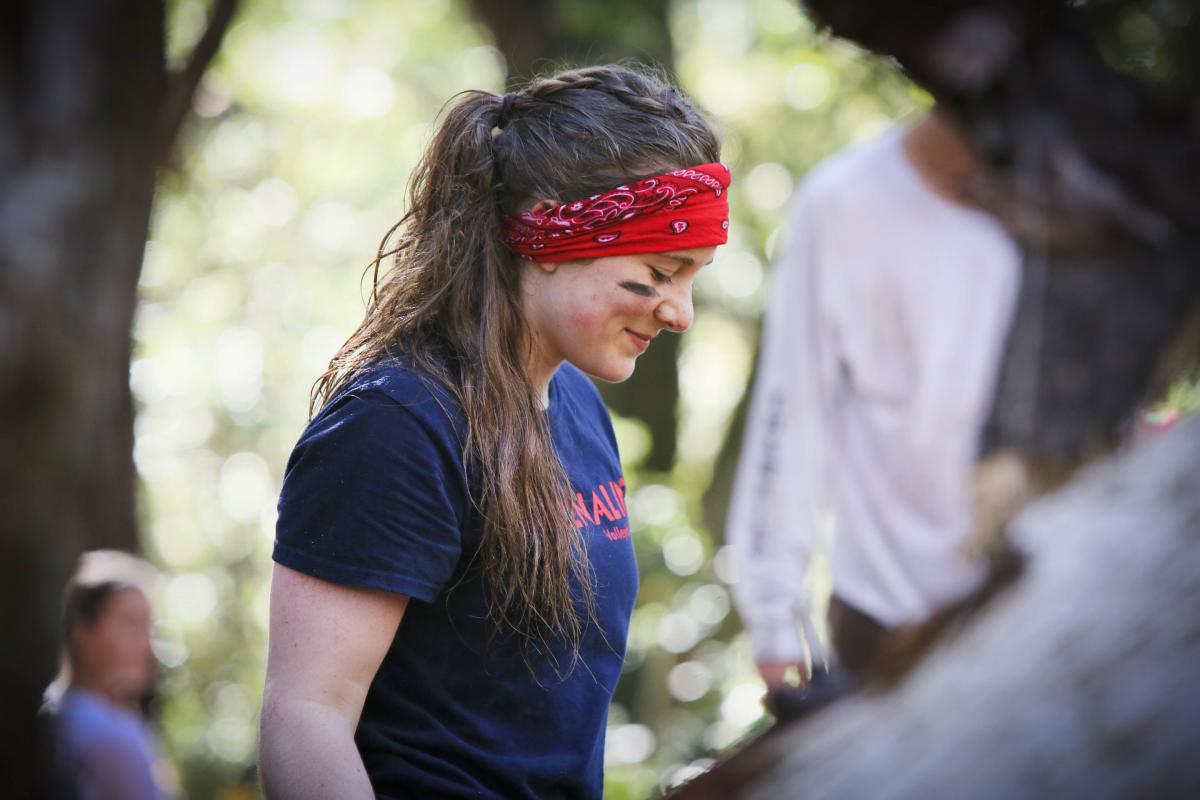 This is not a typical day for Mount Madonna School (MMS) students, but it was one that the participating high school sophomores, juniors and even a few seniors – along with MMS high school history teacher Matt Meachen — had anticipated for some time – since Meachen first introduced this hands-on activity in 2012.
This is not a typical day for Mount Madonna School (MMS) students, but it was one that the participating high school sophomores, juniors and even a few seniors – along with MMS high school history teacher Matt Meachen — had anticipated for some time – since Meachen first introduced this hands-on activity in 2012.
The students were participating in a WWl trench warfare simulation, designed to introduce them, albeit in a scaled-down, controlled fashion to the difficult physical and mental conditions faced by troops in WWI.
‘It is one thing to read, write and discuss trench warfare and World War I,’ explained Meachen. ‘It is another to show pictures and video. But for these kids who are lucky enough to not be immersed in real warfare, the kinesthetic piece is important. The methods for scoring and winning each round are supposed to be challenging — both physically and mentally. The simulation is not meant to duplicate human suffering or glorify violence, but instead to give students a taste of what was required of these men, and hopefully in a fun and memorable way, bumps, bruises and all.’
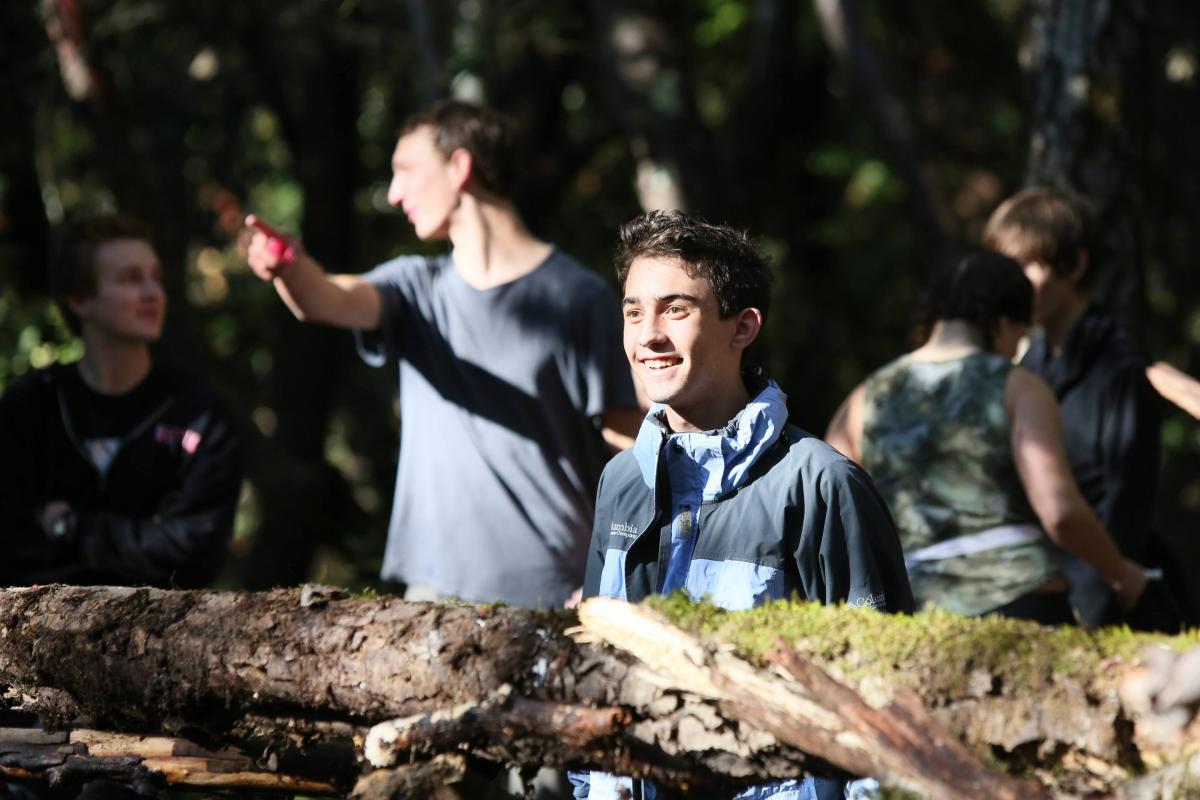 Representing the American forces are the eleventh grade students, who are currently studying WWl in history class. They engage with the upper hand; they participated as sophomores last year, and have a sense of what they are in for, what works, and what will be more difficult.
Representing the American forces are the eleventh grade students, who are currently studying WWl in history class. They engage with the upper hand; they participated as sophomores last year, and have a sense of what they are in for, what works, and what will be more difficult.
The German forces are represented by the sophomore class — ‘newbies’ to the activity, although a few came to watch from the sidelines the previous year. Judging from some of these students’ facial expressions and whispered comments it’s clear, however, that the concept of simulating a battle in such a down and dirty — and uncomfortable — way has taken them well out of their comfort zones. In history, the sophomores are now learning about the American Revolution, and it won’t be until they are juniors that they will analyze and discuss ‘the war to end all wars.’

 ‘While the tenth graders are getting this immersion and introduction before learning about this war in class, it really works,’ Meachen explained. ‘When we get to this topic next year, I won’t need to spend time on helping them understand why the trenches and this type of warfare were abandoned after just one war. Due in large part to this hands-on experience, they’ll already get it. If I can get them to feel the emotions imbedded in this activity, then they are more likely to remember what they learned over a longer period of time.’
‘While the tenth graders are getting this immersion and introduction before learning about this war in class, it really works,’ Meachen explained. ‘When we get to this topic next year, I won’t need to spend time on helping them understand why the trenches and this type of warfare were abandoned after just one war. Due in large part to this hands-on experience, they’ll already get it. If I can get them to feel the emotions imbedded in this activity, then they are more likely to remember what they learned over a longer period of time.’
 Like a commanding officer briefing his troops, Meachen addressed students before the battle begins.
Like a commanding officer briefing his troops, Meachen addressed students before the battle begins.
‘There is honor in abiding by the rules of engagement,’ he said. ‘First, there is a chain of command. Like it or not, you must obey your commanding officer. No arguing. This is not the ‘let’s talk about it at lunch kind of thing’. Equally as important for this type of warfare is your trench integrity. You need to uphold and defend its infrastructure. Without it, you will fail.’
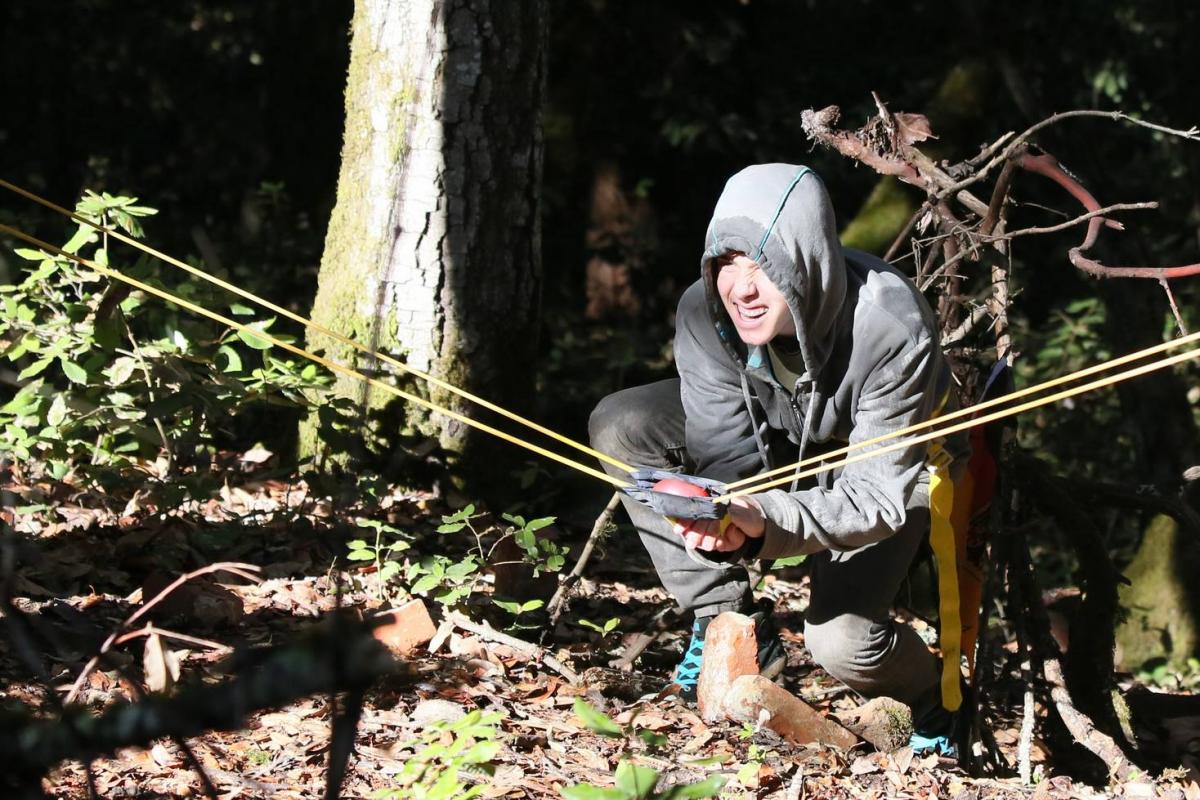 He runs down a list of scenarios and rules about how each timed round will be scored. Teams will be awarded points for various actions, including the ‘live capture’ of an opponent as well as for casualties.
He runs down a list of scenarios and rules about how each timed round will be scored. Teams will be awarded points for various actions, including the ‘live capture’ of an opponent as well as for casualties.
‘POWs are a form of currency in war,’ said Meachen. ‘They are good leverage and worth more than a casualty.’
Meachen has a new added a new ‘challenge’ to the activity, a battlefield ‘medi-vac rescue.’ Using only a supplied tarp, some rope, their own muscles and ingenuity, four students on each team will construct ‘gurneys’ and transport a ‘wounded’ comrade from the difficult terrain of the battlefield to the relative safety of the team’s trench.
 ‘Remember,’ Meachen reminded as he looked around at his students, ‘time is your worst enemy. Imagine that your wounded soldier has a compound fracture. You need to be careful and get them back to the trench. Otherwise they will ‘die’ of infection or shock. A successful mission will earn your side 3 points.’
‘Remember,’ Meachen reminded as he looked around at his students, ‘time is your worst enemy. Imagine that your wounded soldier has a compound fracture. You need to be careful and get them back to the trench. Otherwise they will ‘die’ of infection or shock. A successful mission will earn your side 3 points.’
It’s time. Meachen dismisses the students to head to the battle site, located a short walk from their classroom in the forest. There they’ll have a few minutes to shore up their trench defenses, select officers and strategize. Before heading over himself, Meachen takes a few minutes to consult with a dozen senior students who enjoyed the activity last year as juniors, and have received permission to participate again. He divides them into two groups, and assigns each group to support a side.
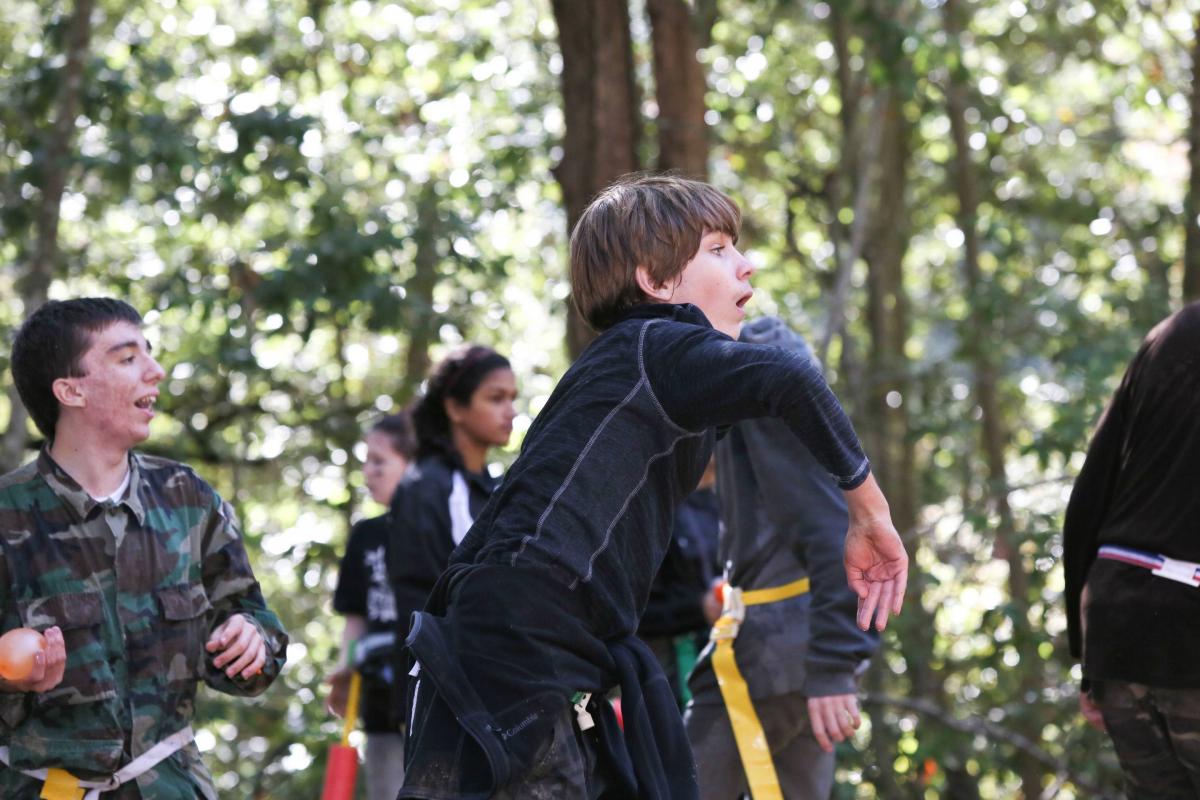 Nearby, the voices emanating from the battle site sound deceivingly upbeat. Mount Madonna School’s entire high school is 65 students, and everyone knows one another. Camaraderie is strong and personal. For anyone listening in, it wouldn’t be a stretch to imagine you’d stumbled upon a group of friends camping together in the woods. That, however, is about to change.
Nearby, the voices emanating from the battle site sound deceivingly upbeat. Mount Madonna School’s entire high school is 65 students, and everyone knows one another. Camaraderie is strong and personal. For anyone listening in, it wouldn’t be a stretch to imagine you’d stumbled upon a group of friends camping together in the woods. That, however, is about to change.
‘Ten minute warning,’ shouted Meachen as the students scrambled to complete their preparations.
 ‘Let’s get some hands on this log, folks,’ yelled senior Curtis Clausen, as he grabbed one end of a large log to leverage it into place. His voice assumed a coarser, authoritative tone, that sounded less ‘teenager’ and more ‘officer’ — which suited him well, as the sophomore students had selected him as their general. ‘Let’s make this trench impenetrable. We need to shore this up or we’re going down — and that is not acceptable!
‘Let’s get some hands on this log, folks,’ yelled senior Curtis Clausen, as he grabbed one end of a large log to leverage it into place. His voice assumed a coarser, authoritative tone, that sounded less ‘teenager’ and more ‘officer’ — which suited him well, as the sophomore students had selected him as their general. ‘Let’s make this trench impenetrable. We need to shore this up or we’re going down — and that is not acceptable!
‘Are you ready? Are you getting psyched’ Clausen asked loudly. ‘If you are in my platoon, I hold you to the utmost standard! We don’t want any resource left untapped.’
Suddenly a handful of eleventh grade girls break in a soulful rendition of the ‘Star Spangled Banner.’ As they hit the final notes, their entire platoon chants ‘U-S-A, U-S-A, U-S-A!’ The shrill sound of the tanker truck’s horn signals the start of the battle.
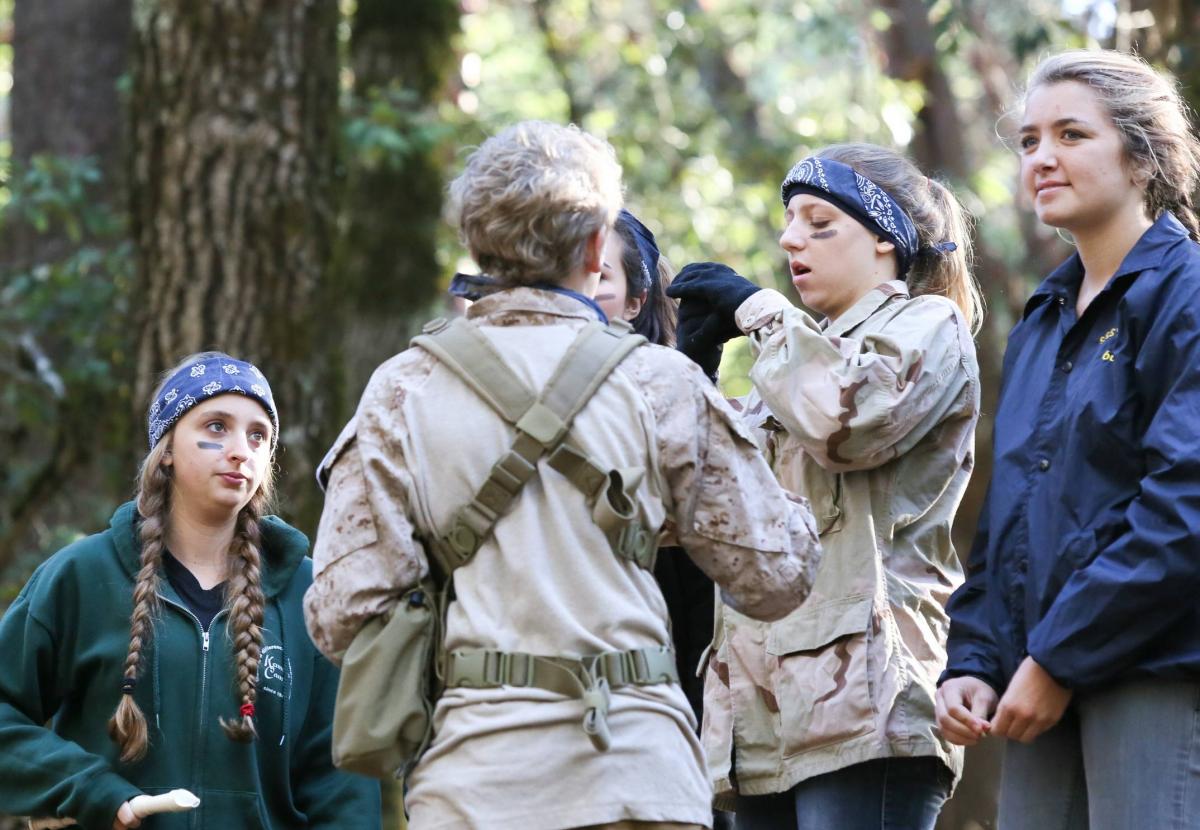 A couple minutes into the action, the first casualty emerges.
A couple minutes into the action, the first casualty emerges.
‘I got hit directly in the foot with an artillery round,’ explained sophomore Cameron Bess. ‘I’m out, that was quick.’ Soon thereafter sophomore Nathan Burgess joined an increasing number of ‘casualties’ on the sidelines.
‘We were closing in on someone who was sneaking up from behind,’ he explained. ‘As I Iobbed my water balloon — and missed — he got me.’
The ‘battle’ picks up in intensity and students’ tension visibly increases: water rains down, strategies fall apart, and the number of casualties (mostly Germans) piles up. Voices communicate greater anxiety as the students get into their roles.
 ‘I’m wounded,’ called out senior Soul Kerr, as he hit the ground to await rescue.
‘I’m wounded,’ called out senior Soul Kerr, as he hit the ground to await rescue.
‘Get him a medic!’ responded sophomore Sophie Ortiz, in an urgent voice.
Nearby a ‘casualty’ complained aloud abut the ‘unfairness’ of another troop not observing the rules.
‘Well, that’s what you get sometimes in war — cowardice,’ answered a bystander who overhead the exchange. ‘War is not fair.’
 The end of the round is called before time is up, as the decimated German forces had only a few soldiers still standing and their casualties outnumbered that of the Americans by about 3 to 1.
The end of the round is called before time is up, as the decimated German forces had only a few soldiers still standing and their casualties outnumbered that of the Americans by about 3 to 1.
Meachen stepped forward and addressed the whole group.
‘Some of you aren’t really thinking about what you’re doing, you’re just randomly, arbitrarily taking action, and for most it’s not paying off. Remember, if this was WWI, you’d have been in the trench, possibly for weeks or months. Maintain your trench integrity. It’s primo real estate, and without it, you’d sometimes be dead in a few hours.
 ‘In real life this was a close war. For the students portraying the Germans, you need to make adjustments and see if you can improve your strategy.’
‘In real life this was a close war. For the students portraying the Germans, you need to make adjustments and see if you can improve your strategy.’
It’s unclear how much Meachen’s suggestion really sinks in. While round two sees some regrouping — the younger students now have some idea of how this exercise can be played and won or lost — only about a third of the team gather to discuss a strategy, while the rest simply stand and wait for the next round to begin.
 ‘This time we’re definitely a lot more strategic with how we use our ammunition and with our placement of people,’ noted junior Rami Walker. ‘It definitely helped that we did this last year. It’s easy to think that this war was just ‘clean’ — that it was just ‘a winner’ and ‘a loser.’ But as I participate and really get into it, I can better understand that there’s a lot of ‘gray’ area and it’s much more complicated to know who the winner is and who the loser is. In the real war, and in our activity, both sides lost a lot.’
‘This time we’re definitely a lot more strategic with how we use our ammunition and with our placement of people,’ noted junior Rami Walker. ‘It definitely helped that we did this last year. It’s easy to think that this war was just ‘clean’ — that it was just ‘a winner’ and ‘a loser.’ But as I participate and really get into it, I can better understand that there’s a lot of ‘gray’ area and it’s much more complicated to know who the winner is and who the loser is. In the real war, and in our activity, both sides lost a lot.’
Sophomore Tyler Sullens, who watched some of the activity from the side lines last year, echoed a sentiment shared by soldiers across time, continents and battles: ‘The hardest thing is sometimes you just have to follow orders that you don’t agree with.’
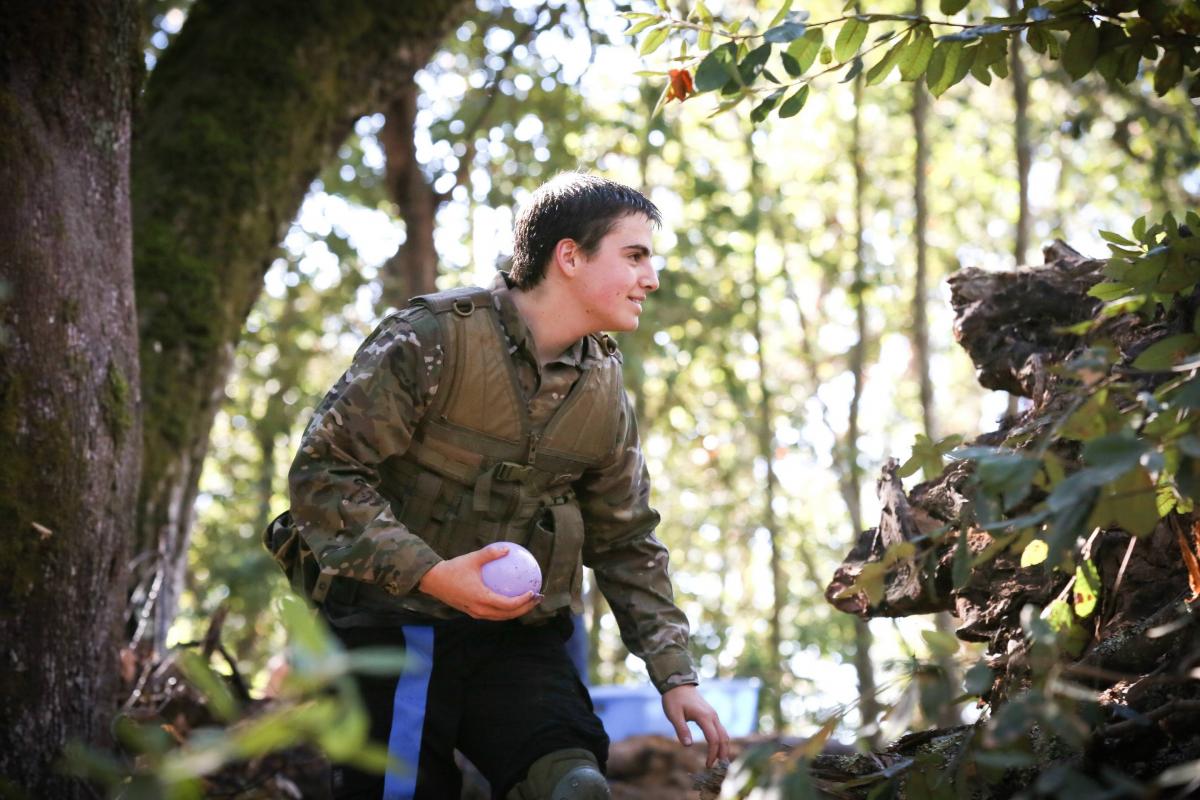 ‘I really want to develop a deeper understanding and respect for the sacrifices that soldiers, most of whom are not much older than our students, make on a daily basis,’ commented Campbell. ‘War is so overwhelmingly glorified in our popular culture — think Call of Duty video games — that I think more exposure to the real “conditions” of war that we can provide our kids, the more they can develop a healthy and perhaps more nuanced understanding of what war is. This will help them become better voters and citizens.
‘I really want to develop a deeper understanding and respect for the sacrifices that soldiers, most of whom are not much older than our students, make on a daily basis,’ commented Campbell. ‘War is so overwhelmingly glorified in our popular culture — think Call of Duty video games — that I think more exposure to the real “conditions” of war that we can provide our kids, the more they can develop a healthy and perhaps more nuanced understanding of what war is. This will help them become better voters and citizens.
 ‘Play is for experience and learning. ‘This is the real value of hands-on activities such as this trench warfare simulation. It’s important to employ experiential learning whenever possible. This engages students in active, sensory learning and helps students of all learning modalities approach the content. It also creates linkages, or transfer, between a multiplicity of settings, giving students and opportunity to employ their kinesthetic, interpersonal, intra-personal, and strategic thinking.’
‘Play is for experience and learning. ‘This is the real value of hands-on activities such as this trench warfare simulation. It’s important to employ experiential learning whenever possible. This engages students in active, sensory learning and helps students of all learning modalities approach the content. It also creates linkages, or transfer, between a multiplicity of settings, giving students and opportunity to employ their kinesthetic, interpersonal, intra-personal, and strategic thinking.’
‘Participating in an activity like this gives students one aspect of what battle could be like — even on a cool sunny day in Watsonville,’ remarked onlooker Gail McCredie, the mother of one participant. ‘The kids are wet and cold and uncomfortable,’ she noted. ‘And I think Matt [Meachen] is quick to remind them to consider, ‘yes, and what if you were going to bed like that’for days on end.’ I think this experience gives them a perspective they wouldn’t otherwise get, if they weren’t so hands-on.’
####
Photos by Maureen Pramanik
Contact: Leigh Ann Clifton, Marketing & Communications,
Nestled among the redwoods on 355 mountaintop acres, Mount Madonna is a safe and nurturing college-preparatory school that supports students in becoming caring, self-aware and articulate critical thinkers, who are prepared to meet challenges with perseverance, creativity and integrity. The CAIS and WASC accredited program emphasizes academic excellence, creative self-expression and positive character development. Located on Summit Road between Gilroy and Watsonville.
